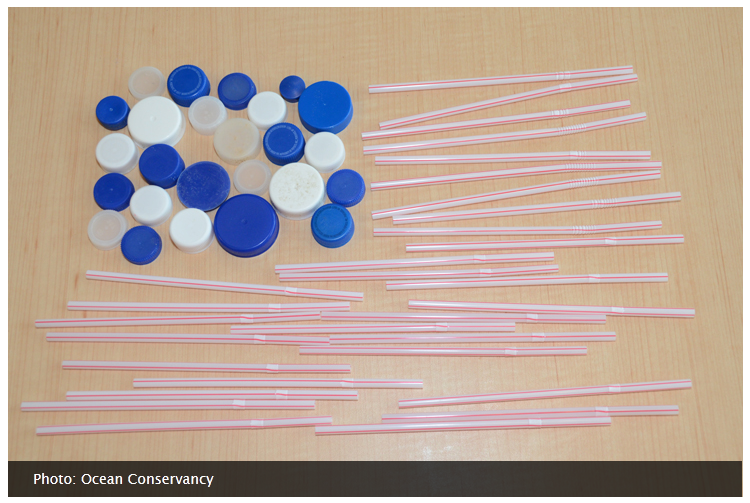Seven or eight years ago, I found a great deal: $3.99 for a roll of six from Trader Joe's. It's made with 100% recycled material (80% post-consumer), so it's cheap -- and 'green', according to the Natural Resources Defense Council's Environmental Ratings of Household Tissue Paper Products. It's one of seventeen brands of toilet paper that meet the following criteria:
- Made with 100% total recycled content (or Forest Stewardship Council (FSC)-certified virgin fiber under an endangered forests policy)
- Contains at least 30% post-consumer content
- Not chlorine bleached
- Not made using a pulping caustic produced by a chlor-alkali plant that uses mercury
"...comes mostly from old, second-growth forests that serve as important absorbers of carbon dioxide, the main heat-trapping gas linked to global warming. In addition, some of the pulp comes from the last virgin North American forests, which are an irreplaceable habitat for a variety of endangered species.
[Additionally] turning a tree to paper requires more water than turning paper back into fiber, and many brands that use tree pulp use polluting chlorine-based bleach for greater whiteness."I was feeling pretty happy with myself for having found the Trader Joe's brand, until it dawned on me that this brand comes in a plastic wrap that is designed to be thrown away after the six rolls are gone.
The Trader Joe's bag has the #4 LDPE code which is recyclable. The problem is that the wrap is likely made of virgin plastic (it would be labeled as having recycled content if it actually did), and this likely-virgin plastic is disposed of after one use. Even if I recycle these plastic wrappers, they'll still end up in landfill after being down-cycled to a point of low utility (see day #19).
Recycling plastic is also in itself labor- and resource-intensive. The Environmental Protection Agency describes the process:
Plastics...are usually collected from curbside recycling bins or drop-off sites. Then, they go to a material recovery facility, where the materials are sorted by plastic type, baled, and sent to a reclaiming facility. At the facility, any trash or dirt is sorted out, then the plastic is washed and ground into small flakes. A flotation tank may be used to further separate contaminants, based on their different densities. Flakes are then dried, melted, filtered, and formed into pellets. The pellets are shipped to product manufacturing plants, where they are made into new plastic products.Perhaps worse, most plastic is just thrown away. In the U.S., "only 9% of plastic is recycled", according to a 2012 Environmental Protection Agency report (see Day #7).
Naturally, I started researching options to see if I could find recycled toilet paper, packaged in recycled, non-plastic, materials. Alas, few manufacturers sell toilet paper without the plastic wrap.
Of the seventeen Natural Resource Defense Council (NRDC) 'green' options, 365 Everyday Value, April Soft, CSV Earth Essentials, Earth First, Earth Friendly, Fiesta, Green Forest, Natural Value (unless purchased in bulk), Nature's Choice and the Trader Joe's brand are sold wrapped in plastic.
Ambiance and Best Value were hard to find. In contrast, Marcal was everywhere. The brand is sold in plastic, and appears to be tied to three other brands that are included on the NRDC 'green' list:
- Searching for Pert brought up toilet paper sold in cardboard packaging in bulk at K-Mart under the name Marcal (no sheet/roll count provided)
- Small Steps also seems tied to Marcal, and is either sold in plastic, or in bulk on Amazon, although it's not clear if it comes in plastic or not (regardless, 335 sheets/roll means one gets less for one's money)
- Sofpac also appears to be a Marcal brand, sold in plastic
Green2 isn't on the NRDC list, although it is sold at my local food co-op. It can be purchased one roll at a time (paper wrapped), or in multi-roll packaging (plastic wrapped). Green2 toilet paper materials are harvested from sugar cane with supplemental bamboo (both which must be shipped long distances for use in the U.S.). It isn't Forest Stewardship Council (FSC)-certified) because it doesn't use materials from forests. My co-op was out of the individually-wrapped stock the day I was checking out my options.
Seventh Generation is on the NRDC list and can also be purchased one roll at a time (in paper) and in multi-roll packages (in plastic) from my co-op. Another blogger, of My Plastic Free Life, highlights the option to buy this brand from Amazon in bulk. It appears (from the picture) that the packaging is cardboard.
I tried an individual roll this week. Before considering buying this in bulk, it seemed prudent to ensure that it doesn't feel like sandpaper.
So far, so good...and it seems to be lasting longer with the additional 150 sheets per roll than the Trader Joe's brand. (Another blogger I found, of Cheap Like Me, analyzed cost per sheet. Some people take this quite seriously!)
Mercola suggests that no toilet paper is healthy and suggests getting a bidet, although the author acknowledges: "When you use a bidet you still need a sheet or two of toilet paper to dry yourself...."
Which brings us back to the delicate choice of toilet paper...















